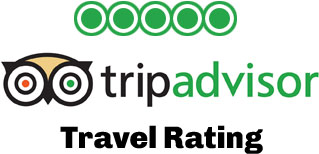Getting Familiar with Shekels Ahead of Your Trip to Israel
May 6th 2015
When you first exchange your dollars for shekels, you might laugh and say that it looks like Monopoly money. As confusing as foreign currencies may be, the shekel is legal tender when you’re in Israel, so it may be a good idea to spend a few minutes wrapping your head around its various denominations and acquisition methods before you head this way. Here’s a quick guide to getting familiar with shekels ahead of your trip.
Shekel is the word used for currency in the Bible, so it makes sense that it was adopted for use in the modern State of Israel, abbreviated as NIS (for New Israeli Shekel, often noted with the symbol of the interlocking shin and chet letters) or simply ILS (Israeli Shekel). Prices in Israel are expressed in shekels and agurot. You may think of agurot as pennies, but a single agura is worth a fraction a US penny, so single-agura coins are no longer minted.
Hotels are notorious for offering the poorest exchange rates. If you have cash to change, it’s best to use a change
station on the street. These are usually small storefronts located in tourist or shopping areas. The workers generally speak at least rudimentary English, so you can ask about the exchange rate they are offering before you commit. Expect to get a slightly lower rate than the bank rate published by the Bank of Israel.
Global banking network-linked ATM machines at larger bank branches almost all allow the withdrawal of shekels from your bank accounts back home. Stores, restaurants, hotels and other merchants commonly accept foreign credit cards as well. In these cases, your bank determines the exchange rate, as opposed to the local bank. You’re likely to get a competitive rate this way, but “international transaction” fees can sometimes be stiff, so it’s a good idea to ask your card provider’s customer service for details before flying, so you can decide if you might be better off exchanging cash.
There are six coins in circulation today. Two coins are bronze-colored, the smaller 10 agurot piece and the largest of
all Israeli coins, worth 50 agurot (the latter is also called a half-shekel coin since it takes 100 agurot to make one shekel).
In addition, Israeli money includes three silver-colored coins and one that’s multi-toned. The smallest coin is the shekel coin. There is a nickel-like two-shekel coin, sometimes affectionately called a “shneckel,” and a larger five-shekel coin that resembles a quarter in diameter. Introduced in 2007, the two-shekel coin is Israel’s newest. The 10-shekel coin is the most valuable and the most distinctive of the metallic denominations, since it’s made of a steel ring that surrounds a bronze center.
There are four denominations of paper money currently in circulation. These are the 20-shekel note (green), the 50-shekel note (purple), the 100-shekel note (brown) and the 200-shekel note (red). In 2014, a new, green-dominated design of the 50-shekel note was introduced. At the time of publication, both versions of the 50-shekel bill are in common circulation. New versions of the other denominations are currently in the pipeline over at the Bank of Israel, which presides over the nation’s cash circulation matters.











